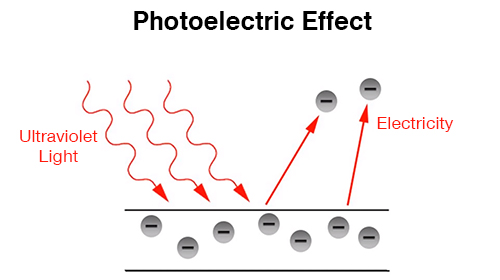Energy has always been a pivotal factor in human societal transformation and progress. This importance became especially evident after the two Industrial Revolutions, making people increasingly aware of energy development's critical role.
In today’s rapidly advancing society, traditional energy sources like fossil fuels (coal, oil, etc.) face significant challenges due to long regeneration cycles, declining reserves, and diminishing quality. These issues make it increasingly difficult to meet the growing energy demand, pushing the development and utilization of new energy sources to the forefront.
Drawing Inspiration from Photosynthesis: Harnessing Solar Power
As we know, nearly all usable energy on Earth originates from photosynthesis in plants.
Photosynthesis is a biological process in which plants synthesize sugars using carbon dioxide and water under sunlight. Since these sugars release energy during metabolism, solar energy is stored in this way.
However, this energy is not readily usable and typically requires conversion into electricity, the form we commonly use. According to physics, energy conversion always entails some loss. Hence, directly converting solar energy into electricity has become a critical area of research.
Can solar energy be directly transformed into electricity? And what factors influence this process? These were profound questions for scientists in the early 19th century. Fortunately, a major breakthrough emerged in the late 19th century.

The Discovery of the Photoelectric Effect
In 1887, the renowned physicist Heinrich Hertz—whose name is now used as the unit for frequency—accidentally discovered that light striking certain material surfaces could alter their electrical properties. Subsequent research revealed that this phenomenon was caused by electron flow, later termed the photoelectric effect.
At the time, classical physics, founded by Newton, dominated scientific thought. It posited that light was a wave traveling through a medium called ether (akin to ripples spreading across a pond). According to this theory, the energy of a wave depended on its amplitude (intensity of light).
This explanation seemed intuitive. For instance, sunlight feels pleasantly warm in winter but can cause sunburn in the intense heat of summer. Therefore, under classical physics, the photoelectric effect was thought to depend on the intensity of light. Yet, experiments showed otherwise.
Research demonstrated that for a given material, certain colors of light could not induce the photoelectric effect regardless of intensity, while others could generate electricity even at low intensity. These findings contradicted classical physics, plunging it into a crisis and sparking a scientific revolution.
Einstein Unveils the Mystery
Amid this scientific storm, Albert Einstein provided a groundbreaking explanation for the photoelectric effect.
Einstein proposed that light consists of photons, each representing a discrete energy packet. The energy of a photon depends on its frequency (the number of oscillations per second), not its intensity. Thus, whether a material can generate electrons depends entirely on the photon's energy, not the number of photons.
Einstein’s revolutionary insight earned him the 1921 Nobel Prize in Physics, as it resolved a critical issue that classical physics failed to explain.
Solar Cells: Turning Light into Electricity
The discovery of the photoelectric effect paved the way for practical applications like solar cells.
A solar cell resembles a sandwich, with a light-sensitive active layer placed between an electron transport layer and a hole transport layer. The two ends of the structure are electrode materials, often metal and indium tin oxide (ITO).
When the active layer absorbs photons, its electrons are excited to higher energy levels. These excited electrons are transferred to the electron transport layer, while the "holes" (regions lacking electrons) are conducted by the hole transport layer. This arrangement creates a circuit, enabling the flow of current.
By using such a device structure, solar energy can be directly converted into electricity, giving us an efficient and clean energy source.
A Tribute to Scientific Exploration
The principle of solar cells exemplifies how scientific exploration has profoundly improved our lives. Thanks to the dedication of countless scientists and their groundbreaking discoveries, humanity continues to harness the power of nature for a brighter future. Let us pay tribute to their extraordinary contributions!







